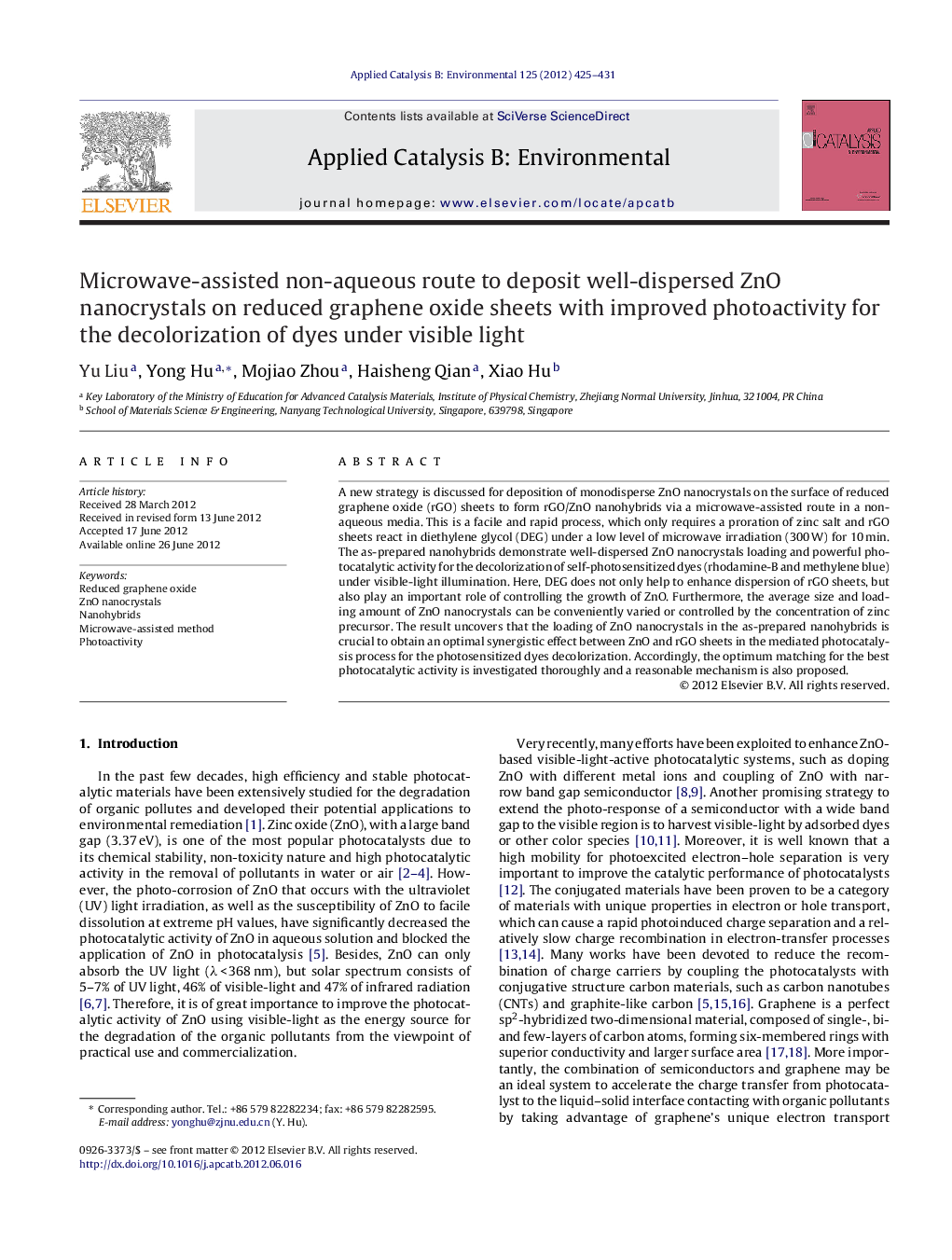| Article ID | Journal | Published Year | Pages | File Type |
|---|---|---|---|---|
| 46095 | Applied Catalysis B: Environmental | 2012 | 7 Pages |
A new strategy is discussed for deposition of monodisperse ZnO nanocrystals on the surface of reduced graphene oxide (rGO) sheets to form rGO/ZnO nanohybrids via a microwave-assisted route in a non-aqueous media. This is a facile and rapid process, which only requires a proration of zinc salt and rGO sheets react in diethylene glycol (DEG) under a low level of microwave irradiation (300 W) for 10 min. The as-prepared nanohybrids demonstrate well-dispersed ZnO nanocrystals loading and powerful photocatalytic activity for the decolorization of self-photosensitized dyes (rhodamine-B and methylene blue) under visible-light illumination. Here, DEG does not only help to enhance dispersion of rGO sheets, but also play an important role of controlling the growth of ZnO. Furthermore, the average size and loading amount of ZnO nanocrystals can be conveniently varied or controlled by the concentration of zinc precursor. The result uncovers that the loading of ZnO nanocrystals in the as-prepared nanohybrids is crucial to obtain an optimal synergistic effect between ZnO and rGO sheets in the mediated photocatalysis process for the photosensitized dyes decolorization. Accordingly, the optimum matching for the best photocatalytic activity is investigated thoroughly and a reasonable mechanism is also proposed.
Graphical abstractFigure optionsDownload full-size imageDownload as PowerPoint slideHighlights► rGO/ZnO nanohybrids were synthesized via a facile and rapid microwave-assisted route in a non-aqueous media. ► The nanohybrids exhibit well-dispersed ZnO nanocrystals loading. ► They also demonstrate improved photoactivity for the decolorization of self-photosensitized dyes under visible light.
